Cheese is one of the more nuanced foods within the low-FODMAP diet. Some cheeses contain a higher FODMAP load than others, and you can’t always tell a low-FODMAP cheese by looking solely at the ingredient list. As a general rule of thumb, we recommend aged cheeses, as much of the lactose will have been removed during the cheese-making process.
This article takes a deep dive into the cheese aisle, giving you tips and advice for choosing a delicious, gut-friendly cheese. If you’d like to get the FODMAP content of a specific cheese product (like the one in your fridge), you can always scan its barcode with the Spoonful App.
New to FODMAPs? Check out our Ultimate Low FODMAP Food List – compiled by our team of registered dietitians from around the world.
How Cheese is Made (and why it matters)
To start the cheese making process, an acid or live culture is added to milk, which converts the milk sugar (aka lactose) into lactic acid. Next, rennet is added to the acidic milk causing the milk solids or casein to start curdling. The whey is now separated and strained. (Whey is often dried and made into whey protein powder and used as an ingredient in a variety of foods.) From there, the cheese is set in molds and left to ripen for days, months, or even years. Some cheeses are even made with bacteria or mold before or during the aging process, which adds depth, flavor, and uniqueness.
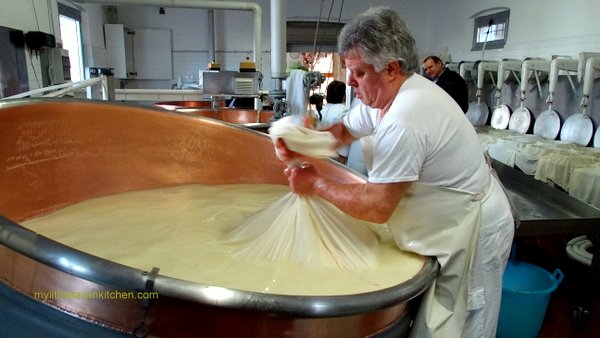
So why do we recommend aged cheeses? When a cheese is aged, it gives the microbes and enzymes adequate time to break down the milk proteins and sugars. This, in turn, reduces the lactose content to very low levels. making it more likely to be compliant with the low-FODMAP diet. On the flip side, new or fresh cheeses that have had less time to ripen can be high FODMAP due to excess lactose. Cheese foods and sauces can also have excess lactose due to the addition of ingredients like milk solids, whey, or milk protein concentrate.
Finding Low-FODMAP Cheese Section on the Monash App
Monash University has tested a wide variety of cheeses and many are in fact low FODMAP at small and moderate servings. Often larger portion sizes result in a greater lactose load and high FODMAP. Portion control is key when talking cheese. Remember, you can enjoy a low FODMAP serving of cheese at each meal or snack if spaced out by at least three to four hours, for those who like to indulge frequently.
While Monas has tested a large number of cheeses, the reality is that there are approximately five hundred different varieties of cheese and the majority have not been tested. Does this mean you can’t enjoy your favorite cheese if it hasn’t been tested? Absolutely not. Feel free to enjoy any aged cheese as long as the sugar content (or sometimes declared as only carbohydrates) is 1 gram or less on the nutrition label. If the carbohydrate or sugar content is 1 gram or less, the cheese is low FODMAP. Why? Monash states that a low-FODMAP serving of lactose is 1 gram or less per serving.
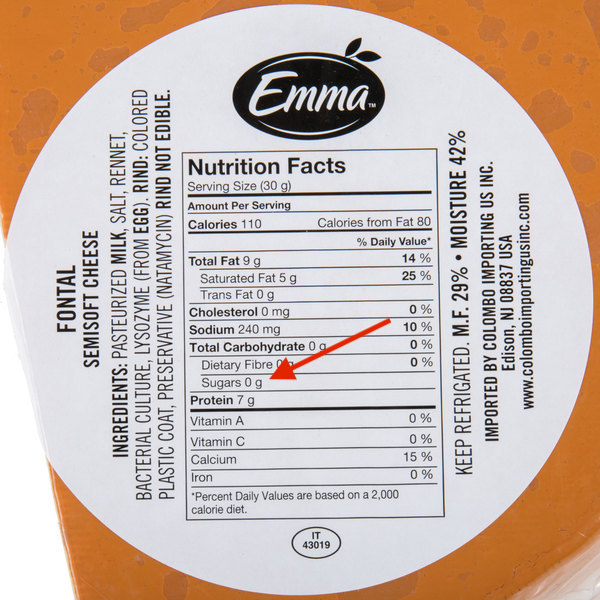
Here is an example of an untested cheese. Because the nutrition label says 0 grams of sugar, it would be considered low FODMAP.
Low FODMAP is Not a Dairy-Free Diet
It’s important to remember that you can consume a variety of dairy products on the low-FODMAP diet. In addition to aged cheeses, feel free to enjoy lactose free milk, lactose-free yogurt, lactose-free ice cream, and lactose-free cottage cheese, as long as these products contain no other high-FODMAP ingredients. You can also enjoy small portions of cream, sour cream, and a splash of milk in your tea.
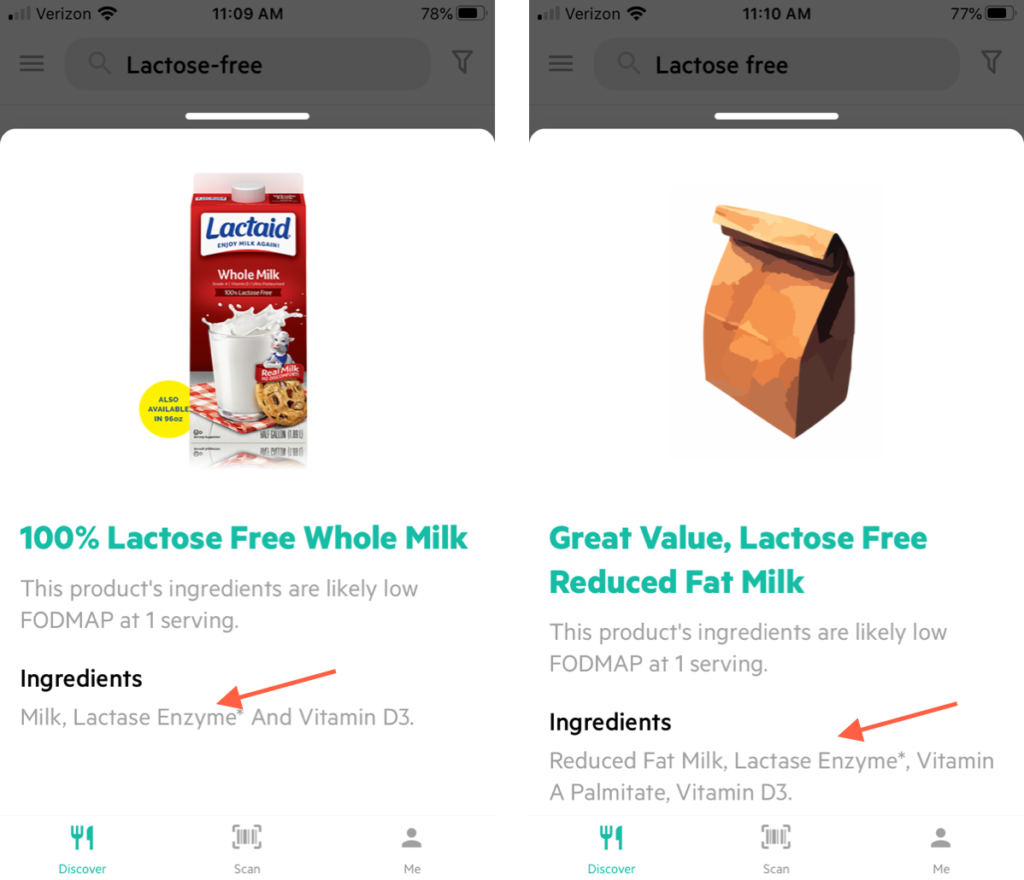
Tip: Dairy products treated with lactase enzymes are considered lactose-free and low FODMAP, even if the sugar content is greater than 1 gram.
However, take note that goat milk, sheep milk, and A2 Milk are all considered high FODMAP due to excess lactose content. Opt for lactose-free milk until your triggers are known.
Low-FODMAP Cheese Varieties
Below is a list of gut-friendly cheeses that are considered compliant in their original form.
- Camembert cheese
- Cheddar cheese
- Feta cheese
- French Comte cheese
- Goat also known as chevre (plain) cheese
- Haloumi cheese
- Havarti cheese
- Monterey Jack cheese
- Mozzarella cheese
- Pecorino cheese
- Quark cheese
- Queso Fresco cheese
- Swiss cheese
- Colby cheese
- Brie cheese
- French Gruyere cheese
- Manchego cheese
- Soy cheese (this is low per Monash, however, you may need to look over the food label to ensure other high-FODMAP ingredients were not added)
These cheeses are low FODMAP in smaller serving sizes (refer to the Monash App for more details).
- Cottage cheese
- Cream cheese
- Sour cream
- Ricotta cheese
- French style creamy cheeses
Label Reading Advice for Cheese
If you’re looking at a variety of cheese that hasn’t been tested by Monash (And oh no! You’ve forgotten your Spoonful App!), here are a few examples that will help you form your own determination of low and high FODMAP.
Gut-Friendly Cheese Label
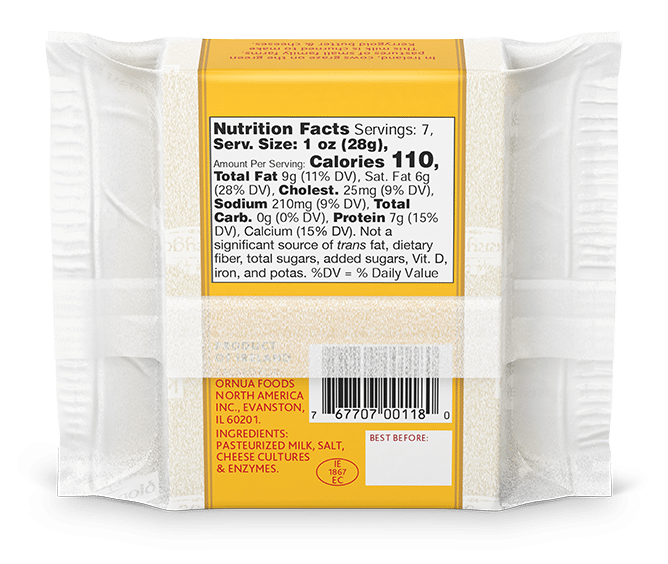
Total carbohydrates is 0 grams, which means that this cheese is low FODMAP.
Not so Gut-Friendly Cheese Labels
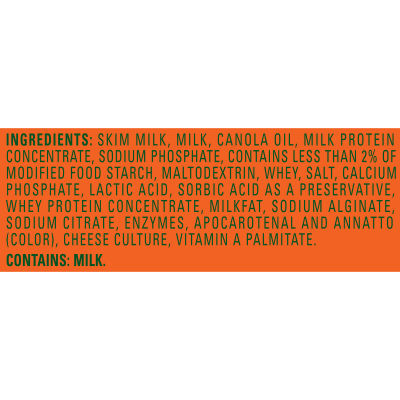
The added milk protein concentrate likely contributes to the extra lactose.
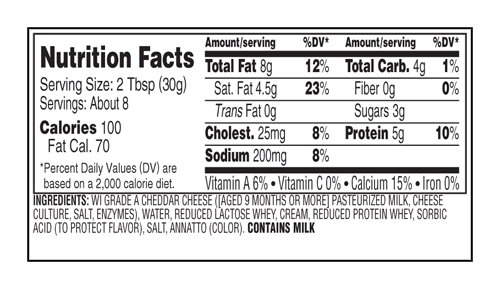
Total sugars = 3 grams, which means that this cheese is high FODMAP. In this case, the added reduced lactose whey and reduced protein whey likely contribute to the extra lactose.
What About Vegan Cheeses?
Vegan cheese received the pass from FODMAP Friendly’s testing lab in Australia, however I would approach this category with caution. Many US-based vegan cheeses are made with cashews and pea fiber, which are both high in FODMAP content. Natural flavors in vegan cheese may contain garlic or onion, so if this is present in quantities greater than 2%, you may want to call or email the manufacturer to inquire if either garlic or onion is present.
Let’s look at Miyoko’s Rustic Alpine cheese as an example. Its ingredients are:
Organic Cashews, Filtered Water, Organic Coconut Oil, Organic Rice Miso (Organic Rice, Water, Salt, Alcohol, Koji Culture), Nutritional Yeast, Fermented Oregano, Flaxseed And Plum, Sea Salt, Cultures.
This would be considered high in FODMAPs due to the cashews and plum.
High and Low-FODMAP Cheese Ingredients
Below is a list of common ingredients that will help you determine gut-friendly cheeses from their counterparts.
High-FODMAP Ingredients
- Garlic
- Onion
- Leeks
- Shallots
- Natural flavors if present in quantities greater than 2%
- Inulin – while not common, it may be added to some cheese-based foods
If these ingredients are added to cheese in quantities >2%, the cheese may contain excess lactose. If any of these are added and the cheese contains <1g of carbs/sugar, then it would be considered low FODMAP.
- Whey
- Milk Protein Concentrate
- Dry milk solids
- Reduced Lactose Whey
- Lactose
Low-FODMAP Ingredients
- Rennet
- Enzymes
- Milk fat
- Whey protein isolate
- Soy protein – found in some soy cheeses
- Chives
How Spoonful Helps you Find Gut-Friendly Cheeses
Since milk and cream are normally highlighted red and yellow on the Spoonful App, we have applied special rules or exceptions that identify a cheese as low FODMAP when enzymes and rennet are present.
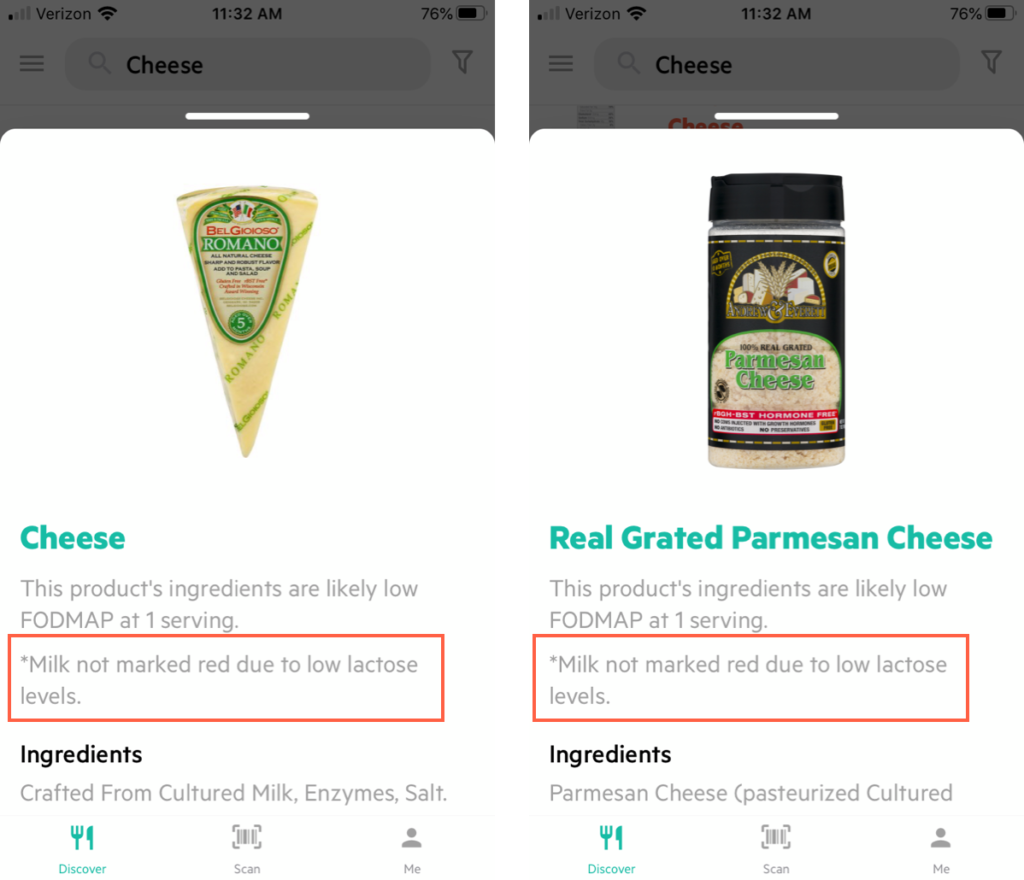
Feel free to scan your favorite cheese and see what the Spoonful app says. More information on how Spoonful determines the FODMAP content of a product.
Summary Notes
- Opt for an aged cheese whenever possible, especially if you want to enjoy a satisfying portion.
- Watch portions for fresh or non-aged cheese since these contain more lactose.
- Read the product label, and choose a cheese with 1 gram of carbohydrate/sugar or less.
- Avoid most cheese spreads, port cheeses, and other cheese foods since these are often excessive in lactose due to added whey and milk solids.
- Watch out for added high-FODMAP ingredients like garlic, cashews and onion.
- Watch portions – refer to the Monash App for details about low-FODMAP serving sizes.
- Enjoy any lactose-free dairy products! Just be careful to review the label to ensure high-FODMAP ingredients are not present.
We hope this article sheds some light on this sometimes confusing topic. Now you can say with confidence, “Can you please pass the cheese?”.
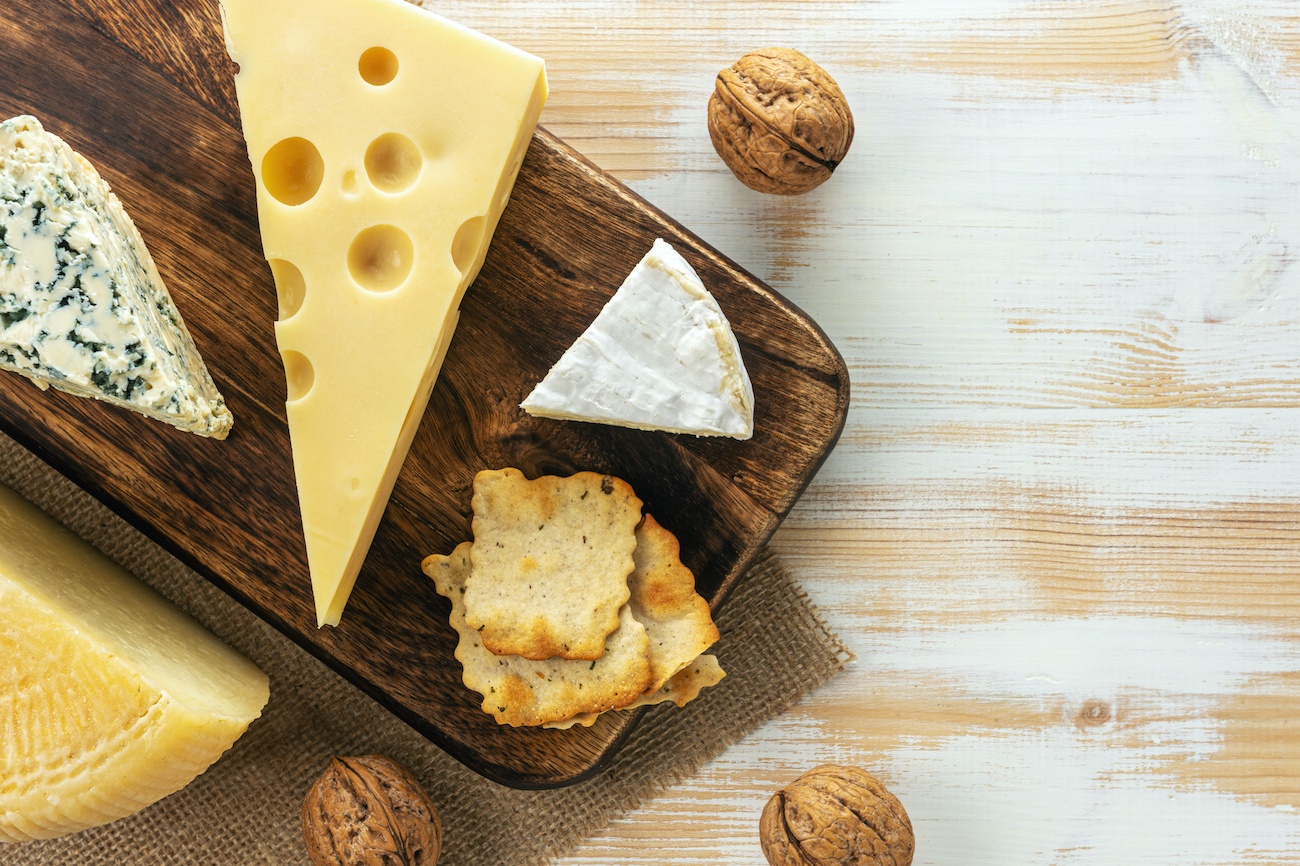
Thank you. All information like this is greatly appreciated. It’s difficult to sort things out many times
You’re very welcome. Thanks for reading!
Vanessa, your posts are always wonderful and easy to follow. The information is pertinent for us trying to keep in line with the FODMAP guidelines which can seem daunting. Thank you.
Gina, thank you so much for the kind words. I really enjoy helping others navigate the low FODMAP diet and finally find symptom relief.
Could you please sign me up for your emails? Thank You.
Great post! I never realized how much variety there is in low-FODMAP cheeses. The tips on checking labels were really helpful—I’ll definitely pay more attention to serving sizes now. Thanks for making this so easy to understand!
Great tips on choosing low-FODMAP cheeses! I appreciated the detailed information on which cheeses are safe to enjoy. It really helps to know what to look for while grocery shopping. Can’t wait to try some of the suggestions!
Thank you for this informative post! I always struggled with cheese choices on a low-FODMAP diet, and your tips on checking labels for lactose content and the cheese types that are generally safer to consume were really helpful. I can’t wait to try some of your recommendations!
This is such a helpful guide! I’ve always struggled with choosing the right cheese while following a low-FODMAP diet. The detailed list of cheeses and tips for what to look out for make it so much easier. Thank you for sharing your knowledge!
Great post! I love how you broke down the different types of cheese and their FODMAP levels. It really helps simplify the process of choosing safer options. I never knew aged cheeses were generally better for low-FODMAP diets. Thanks for the tips!
Great post! I always struggled with finding the right cheese on a low-FODMAP diet, so your tips are super helpful. I didn’t realize some harder cheeses like cheddar and parmesan can be better options. Thanks for sharing this valuable information!
Great tips on selecting low-FODMAP cheeses! I never realized how many options there actually are. I’m excited to try the suggested brands and see how they fit into my diet. Thanks for sharing!
Thank you for this informative post! I always struggled with cheese options on a low-FODMAP diet. The tips you provided about checking labels and understanding lactose content are super helpful. Can’t wait to try some new cheeses!
Great tips on choosing low-FODMAP cheese! I didn’t realize how many options there are. I’m especially excited to try the lactose-free varieties you mentioned. Thanks for making this topic easier to navigate!
Great tips on choosing low-FODMAP cheese! I never knew about the differences in lactose content among various cheeses. This will definitely help me make better choices for my diet. Thanks for sharing!
Great tips on selecting low-FODMAP cheeses! I’ve been struggling with cheese options since starting the diet, and this guide really clarified my choices. I appreciate the detailed breakdown of different cheese types — it’s so helpful to know which ones I can enjoy without worry. Thanks for sharing!
Great tips! I’ve always struggled with finding the right cheese on a low-FODMAP diet. The breakdown of which cheeses to look for was super helpful. Can’t wait to try those recommendations!
This is such a helpful guide! I never knew there were so many options when it comes to low-FODMAP cheeses. I appreciate the detailed descriptions and tips on what to look for in the labels. I can’t wait to try some of these suggestions in my meals!